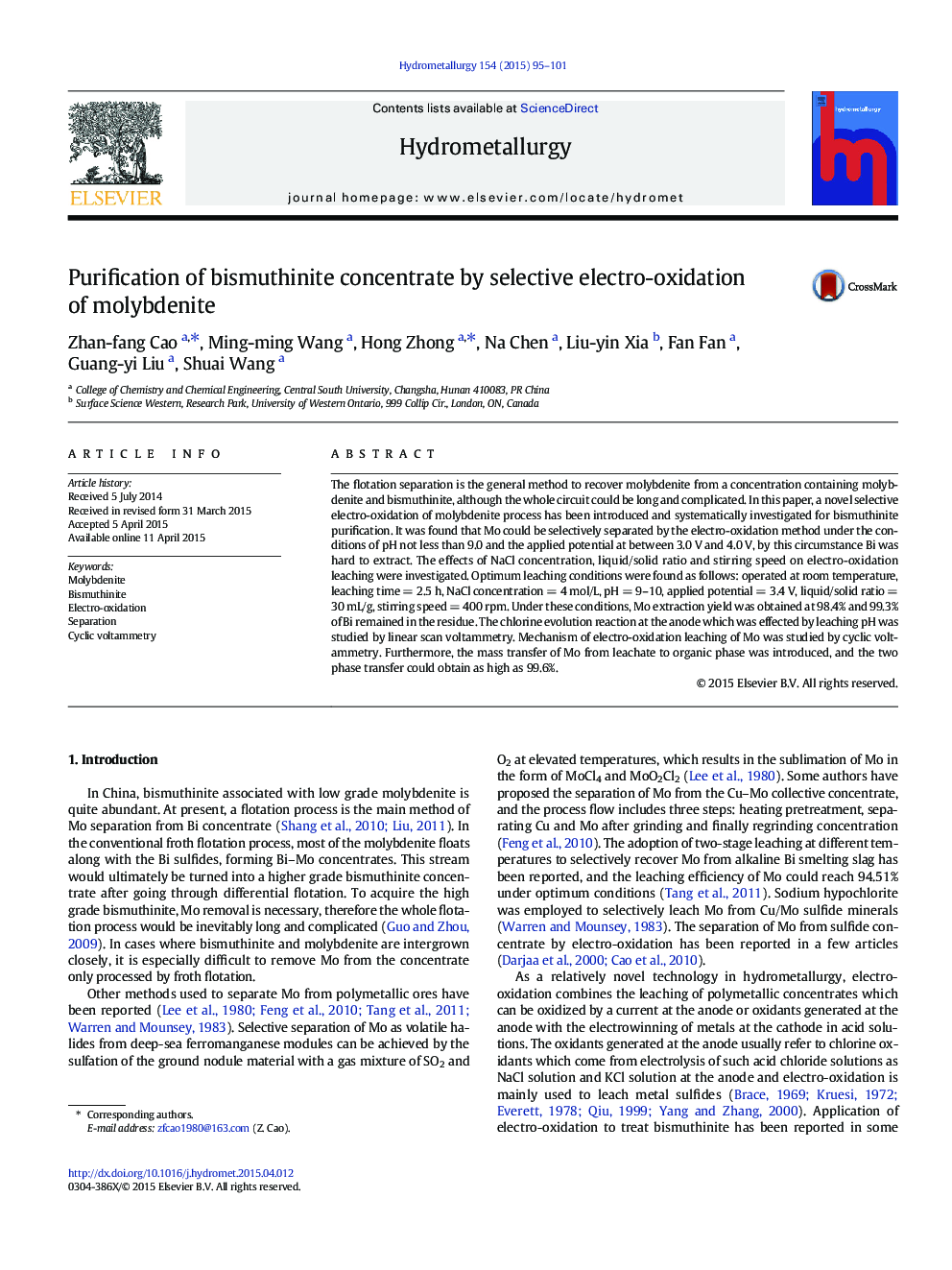| کد مقاله | کد نشریه | سال انتشار | مقاله انگلیسی | نسخه تمام متن |
|---|---|---|---|---|
| 212033 | 462030 | 2015 | 7 صفحه PDF | دانلود رایگان |
• A method of purifying Bi concentrate by electro-oxidation of Mo was found.
• The mechanism of electro-oxidation leaching of Mo was investigated.
• pH and applied potential were found to affect the selective leaching of Mo.
• To recycle electrolyte, a method of recovering Mo from leachate was studied.
The flotation separation is the general method to recover molybdenite from a concentration containing molybdenite and bismuthinite, although the whole circuit could be long and complicated. In this paper, a novel selective electro-oxidation of molybdenite process has been introduced and systematically investigated for bismuthinite purification. It was found that Mo could be selectively separated by the electro-oxidation method under the conditions of pH not less than 9.0 and the applied potential at between 3.0 V and 4.0 V, by this circumstance Bi was hard to extract. The effects of NaCl concentration, liquid/solid ratio and stirring speed on electro-oxidation leaching were investigated. Optimum leaching conditions were found as follows: operated at room temperature, leaching time = 2.5 h, NaCl concentration = 4 mol/L, pH = 9–10, applied potential = 3.4 V, liquid/solid ratio = 30 mL/g, stirring speed = 400 rpm. Under these conditions, Mo extraction yield was obtained at 98.4% and 99.3% of Bi remained in the residue. The chlorine evolution reaction at the anode which was effected by leaching pH was studied by linear scan voltammetry. Mechanism of electro-oxidation leaching of Mo was studied by cyclic voltammetry. Furthermore, the mass transfer of Mo from leachate to organic phase was introduced, and the two phase transfer could obtain as high as 99.6%.
Journal: Hydrometallurgy - Volume 154, April 2015, Pages 95–101
